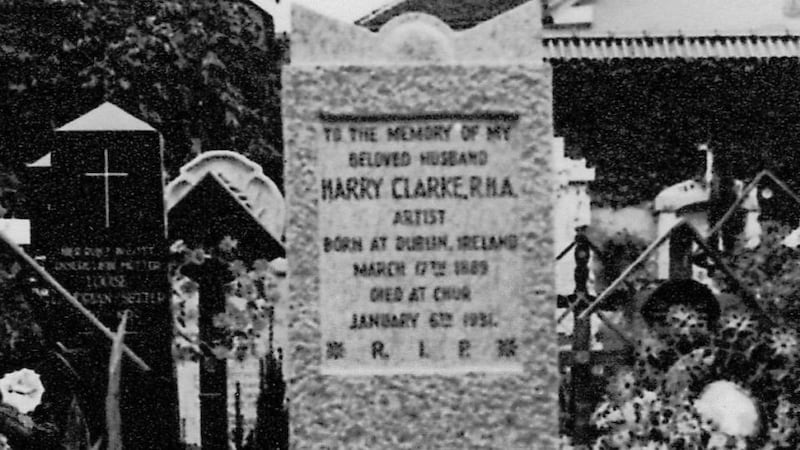Today, the feast of the Epiphany, we celebrate the arrival of the three wise kings from the East bearing precious gifts, at the stable in Bethlehem. It is also the anniversary of the day the Irish stained glass artist and book illustrator Harry Clarke was tragically defeated by TB as he attempted to leave Switzerland.
Diagnosed with the disease early in 1929, Clarke sought a cure in the cold mountain air of Davos. At first he was optimistic, enlivening letters home to his children with whimsical drawings, but as time went on the tone of his letters reflected his declining hopes of recovery. He returned home to Dublin for a few months in 1930, partly to complete a work, known as the Geneva Window, commissioned by the Free State government for the International Labour Office at Geneva. In September, before returning reluctantly to a bleak future in Davos, Clarke showed WT Cosgrave, president of the executive council, this mildly erotic, spell-binding window, depicting illustrations from 20th-century Irish literature. Troubled by the inclusion in the window of works by the iconoclasts James Joyce and Liam O’Flaherty, Cosgrave afterwards wrote to Clarke requesting changes, which were impossible under the circumstances; then communication ceased. In November Clarke wrote to his wife Margaret: “These blighters are so full of butter and dinners that they may have forgotten a work of art for which they owe £450 . . . meanwhile we are stuck”. By Christmas, he had reached his lowest ebb. In his final letter of December 29th, he said he would come home, or go to the south of England, where life would be more tolerable and less expensive. The same day, he wired Alan Duncan, a friend in Paris, to come and collect him.
On January 6th, 1931, Clarke and Duncan embarked, like the magi, on a journey west, travelling by train through the cold and snow. However, not long into the journey, Clarke could not go on and died hours later at the nearby sanatorium of Arosa. After a tiny funeral he was buried in the graveyard of the Catholic Cathedral of Chur. A decent headstone marked his grave, and the inscription informed the world that he was an artist. We Irish, with our low density of population and much grassy land, take it for granted that a grave is our last address. However, much of continental Europe sees it differently; someone has to pay for your place in the earth, a sort of local property tax. If they don’t, you are evicted and your spot rented by someone else. Unbeknownst to Margaret, Clarke’s headstone was removed and his remains were relocated to an unmarked communal plot 15 years after his death – the length of time for which she, unwittingly, had leased his grave. By the 1970s, when Clarke’s son came looking for the grave, it had already housed two subsequent occupants and all trace of Clarke had disappeared.

Clarke’s fame faded rapidly after his death. Although the government did pay for the Geneva Window, which Clarke had hoped would win him international recognition, they locked it away in government buildings. Margaret eventually bought it back and kept it in the Harry Clarke studios. In 1963, Clarke’s last, unrivalled masterpiece was installed in the Hugh Lane Gallery, Parnell Square, where it enthralled visitors for 18 years. Unfortunately, it was only on loan from Clarke’s sons, who sold it to a museum in Miami in 1988, and it seems certain to stay there.
The real memorial to a visual artist is their work on display. However, unlike other works of art, the vast majority of stained glass windows are in churches, most with limited access, some no longer in use, others open only for a few hours a week.
Perhaps the time has come to plan for a museum of Irish stained glass to safeguard the wealth of wonderful art at which the Irish have particularly excelled.
In the meantime, examples of Clarke's work that are currently accessible to the public include the exquisite Eve of St Agnes in the Hugh Lane gallery, the windows in Bewley's in the room called after him, and 11 windows in the Honan Hostel Chapel, Cork University.
As we celebrate the Epiphany and along with it Clarke's anniversary, let us be grateful that one of his finest windows, the three-light Nativity and Adoration of the Magi in St Barrahane's Church of Ireland church, Castletownshend, Co Cork, can be visited all day, every day. The church is kept open to facilitate all those who come to admire this majestic tour-de-force, carried out in 1918 by Clarke when still a young man near the start of a career that brought us such precious gifts.
fianagriffin@gmail.com










